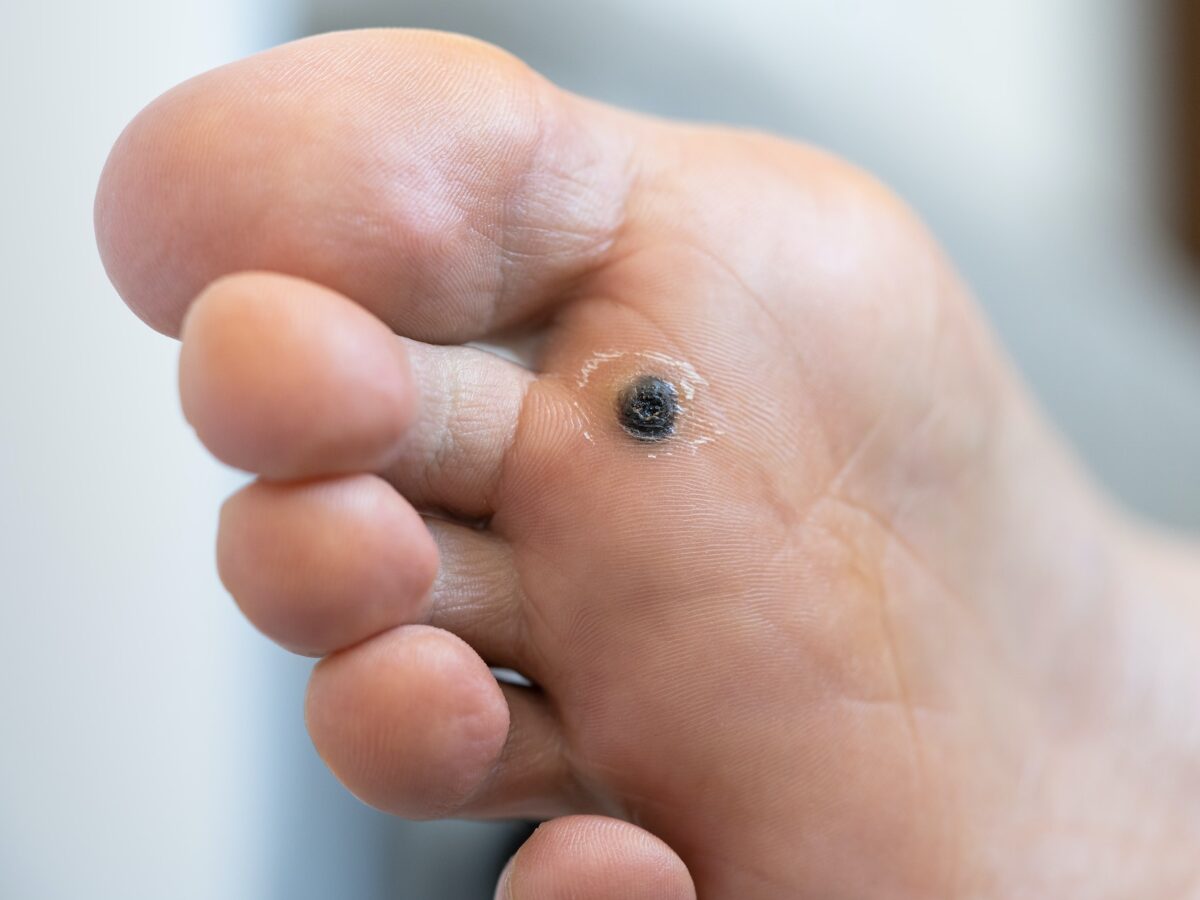Corn, callus, and warts are common skin conditions that can occur on various parts of the body, especially the hands and feet. While they may share some similarities, they have distinct characteristics and treatment approaches. Here’s a brief overview of each condition:
- Corns: Corns are small, round areas of thickened skin that typically develop on the tops or sides of the toes or on the soles of the feet. They often result from repeated friction or pressure on the skin, such as from ill-fitting shoes or excessive walking or running. Corns can be painful and may have a hard or waxy appearance. Treatment options include wearing properly fitted footwear, using over-the-counter corn pads or cushions, and in some cases, removing the corn with the help of a healthcare professional.
- Calluses: Calluses are areas of toughened skin that form in response to repeated friction or pressure. They are usually larger and broader than corns and tend to develop on weight-bearing areas of the feet, such as the soles or heels. Calluses are generally not painful unless they become excessively thick or cracked. Treatment typically involves using moisturizers to keep the skin soft, regularly exfoliating the affected area, and wearing cushioned footwear.
- Warts: Warts are small, noncancerous growths caused by the human papillomavirus (HPV). They can appear on any part of the body, including the hands, feet, or genitals. Warts are contagious and can spread through direct contact or by touching surfaces contaminated with the virus. They often have a rough, grainy appearance and may be flesh-colored, grayish, or brown. Treatment options for warts include over-the-counter topical medications, cryotherapy (freezing), laser therapy, or surgical removal by a healthcare professional.
It’s important to note that self-diagnosis and self-treatment may not always be accurate or effective. If you’re experiencing concerns related to corns, calluses, or warts, it’s advisable to consult a healthcare professional for a proper diagnosis and appropriate treatment.



